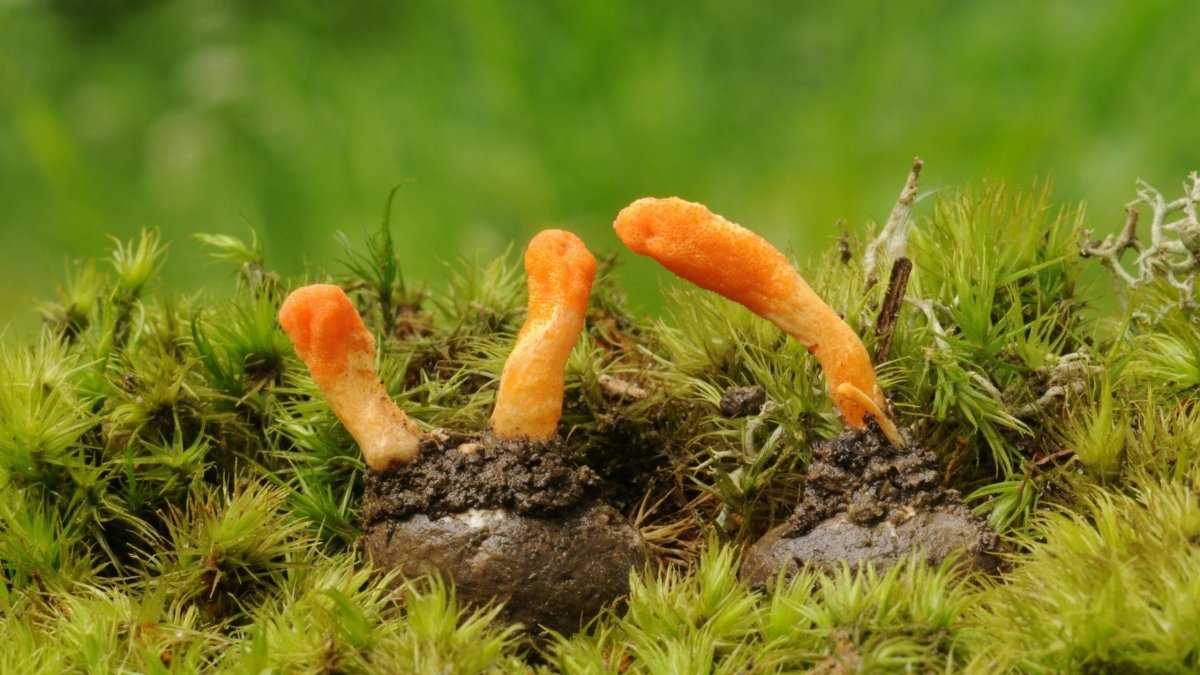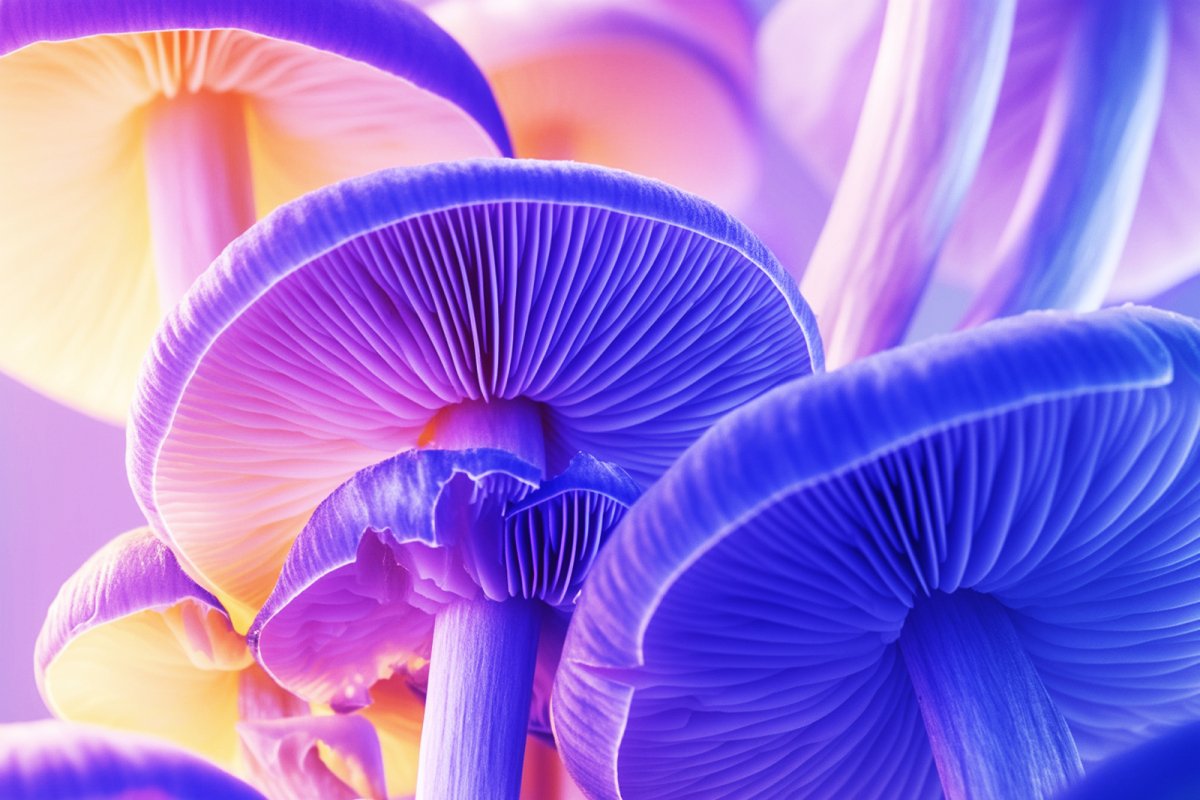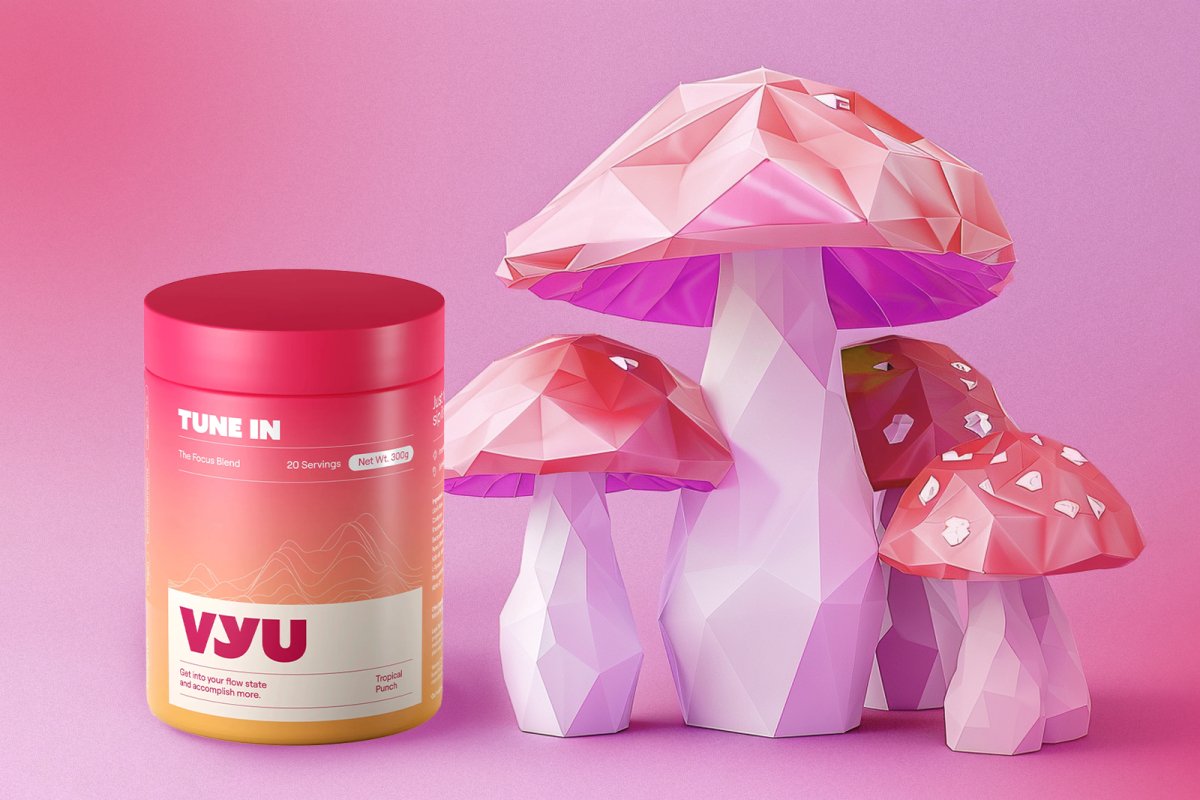

Cordyceps Militaris vs. Sinensis
Published:
Updated:
Every year between April and June, families on the Tibetan Plateau and the Himalayan region of Nepal pack their bags and prepare themselves for a long working day in the mountains. Their objective is to find Ophiocordyceps sinensis, aka the caterpillar fungus, one of the most prized ingredients in traditional Chinese medicine for its wide-ranging health benefits.
Meanwhile, deep in deciduous forests of Europe and tropical rain forests of Asia, a cousin of the caterpillar fungus grows. The scarlet caterpillar fungus, best known by researchers as Cordyceps militaris, can be found in lowlands and uplands from June to December.
During this seasonal window, entire communities get their hands dirty harvesting these beneficial mushrooms. Although they have been used in traditional Chinese and Tibetan medicine for centuries, in recent years, both Cordyceps varieties have experienced a surge in demand in the Western World.
In no time, these mushrooms skyrocketed in popularity, going from eastern world ancient remedies to the American mainstream.
If you're wondering why these mushrooms are highly sought-after and why so many people travel hundreds of miles to look for them, stay. This article is for all those restlessly curious minds that wonder why they are called caterpillar fungi, the main differences between these two, and the potential benefits that these behold.
Without further ado, lets compare cordyceps militaris vs. sinensis the two most valuable members of the cordyceps family.
Key Takeaways
- Cordyceps militaris and cordyceps sinensis are highly sought-after mushrooms in Traditional Chinese Medicine due to their wide-ranging health benefits. They have experienced a surge in demand in the Western world in recent years.
- Cordyceps militaris is an entomopathogenic fungus that parasitizes insects, while cordyceps sinensis is a spore-shooting fungus that also parasites a wide range of insects. Both fungi slowly germinate inside their hosts, kill them, and use their bodies as a launching pad for spore dispersal.
- Cordyceps militaris can be cultivated using vegan cultivation bases, making it more accessible worldwide. On the other hand, cordyceps sinensis is rare and difficult to find due to habitat restrictions and over-collection.
- Both wild and cultivated varieties have their unique properties, but wild cordyceps is more expensive and nourished by nutrient-dense Himalayan soil. It's important to choose high-quality, third-party tested products when considering cordyceps supplementation.
What is Cordyceps Militaris?
Cordyceps militaris is an entomopathogenic fungus, meaning that it parasitizes insects. Both cordyceps varieties, like the good parasites they are, slowly germinate inside their living host to then attack, kill, and mummify its body to achieve one goal: self-propagation and dispersal.
This shady reality that seems to be straight out of a science fiction movie begins with thousands of tiny spores floating in the air like beautiful snowflakes. Although these reproductive cells might seem harmless, theyre silent killers that attach and penetrate the exoskeleton of caterpillars, ants, and other insects.
Once inside, the fungus leisurely develops until it takes over its hosts body through a network of filaments that hijack the insects muscles. As a puppeteer, the cordyceps fungi start to pull their strings to control the infected bug, compelling it to climb, fly, or crawl far away from its colony for a more humid microclimate favorable to the mushroom growth.
Meanwhile, the cordyceps feeds on its victims innards until its ready for the final stage. The fungus kills its host at last and turns its shriveled corpse into a launching pad to sprout from its head, a slender, unicorn-like fruiting body that discharges spores to infect a whole new colony of insects pretty crazy, huh?
Luckily for us, we dont have to worry about the ultimate insects boogeyman because this frightening mushroom is actually a superbly powerful medicinal ally for humans.
From boosting your energy, increasing your endurance, improving your immune system and overall health, the cordyceps mushrooms are packed with incredible health benefits that enhance our well-being in several different ways.
Likewise, if consuming a product that results from an animal's suffering is a concern for you, clear off those worrying thoughts because, thanks to the scientific community, we no longer have to be complicit with this zombifying killer to enjoy its benefits.
Cordyceps militaris productsare being cultivated using primarily wheat, oat, and rice as cultivation bases to access their valuable bioactive compounds. However, before this mushroom could be grown in smart farming labs and greenhouses, harvesting wild species had an astronomical cost and high ecological impact.
Fortunately, different cultivation methods are being developed to satisfy the high demand for this invigorating mushroom.
History and Background
In 1753, The Father of Systematic Botany, Carl Linnaeus, noticed how mace-shaped fruiting bodies in tones ranging from orange to red grew from a wide range of insects.
The Swedish scientist, naturalist, and explorer originally described it as Clavaria militaris, a parasite fungus that grows from common hosts in nature, primarily caterpillars, cocoons, and chrysalids of different butterflies and moths species. Other rare hosts are beetles, sawflies, wasps, bees, ants, and flies.
Eighty years later, in 1833, German mycologist Johann Heinrich Friedrich Link renamed itcordyceps militaris, which remains its generally-accepted scientific name. However, the history and background of the Scarlet Caterpillarclub dont start here.
There are records of cordyceps fungi dating from the golden years of China when it was described as an organism with the ability to transform from animal to plant during the seasonal change.
For centuries, the remains of the insect and fungi have been hand-collected, dried, and used in Traditional Chinese Medicine to ward off colds, treat fatigue, sickness, kidney disease, and low sex drive.
Nevertheless, studies have shown that the benefits of C. militaris go far beyond. Its bioactive components, such as cordycepin, Beta-glucans, and polysaccharides to name a few are responsible for many benefits.
Benefits
Studies in the past decade have shown that Cordyceps militaris can significantly reduce the damage caused by oxidation and inflammation thanks to its antioxidant, anti-inflammatory, and anti-aging effects.
This invigorating folk tonic has also been studied for its prominent hypoglycemic effects that may help manage Type 2 Diabetes, a chronic condition that affects how the body processes blood sugar.
Additionally, it may be beneficial for your heart health. Its primary component, cordycepin, can lower blood pressure and decrease blood levels of bad LDL cholesterol and triglycerides.
In normal conditions, it builds up in your arteries and raises your risk of suffering from heart disease. Impressively, this bioactive component has also displayed powerful antidepressant effects, so it is believed to be a potential mood enhancer.
Despite its many benefits, cordyceps militaris is primarily used to improve the ability to perform intense exercise.One studyfound that it lengthened exhaustion and increased breathing capacity during high-intensity exercise.
What is Cordyceps Sinensis?
Cordyceps sinensis, also known in China as Dong Chong Xia Cao, is a spore-shooting fungus that parasites a wide range of insects. It reproduces similar to C. militaris, and it has been widely used in Traditional Chinese Medicine for centuries.
Its Chinese name translates to English as 'winter worm, summer grass.' It naturally grows and multiplies in the host by yeast-like budding in the autumn, killing the host. Following overwintering, the fungus ruptures the host body, forming a sexual sporulating structure, called a stroma, which is connected to the dead caterpillar and grows upward to emerge above the ground the following summer.
History and Background
It was discovered 1,500 years ago in Tibet by a shepherd who observed how his cattle became more vigorous when they ate this fungus. Its first reference as a medicinal mushroom appeared during the Qing dynasty in China, in Wu-Yiluo's treatise Ben-Cao-Cong-Xin in 1751. After almost a century, the Himalayan Gold was presented in 1841 within the framework of the London Entomological Society.
During the early 20th century, the Lloyd brothers introduced this priceless mushroom to America. Later on, during the explosion of the pharmaceutical industry, several products based on cordyceps sinensis were produced.
Its important to notice that even though in 2007 this mysterious mushroom was renamed as Ophiocordyceps sinensis, many publications still use the name C. sinensis.
Nowadays, this fungus is harvested by several communities around Asia. For them, finding these magic mushrooms is like winning the lottery. Caterpillar fungus prices rise by an average of 20% each year due to their growing demand in Western countries.
Benefits
Modern science has increasingly discovered the therapeutic effects of the fungus variety Ophiocordyceps sinensis. Clinical studies have shown its potential to regulate testosterone levels, blood pressure, blood sugar, fertility, and more. Overall, this fantastic mushroom balances the function of various internal organs of the body while it helps resist viral attacks.
Its numerous components have been linked to many health benefits, among which the following ten are most notable:
May Regulate Immune System
Several studies have shown how cordyceps sinensis tune immunity at its best. Not only does it help increase the cells of the immune system, but also it improves their functionality while promoting the production of antibodies.
Increases Energy and Resists Fatigue
This cordyceps species not only could reduce fatigue but also may increase energy and the ability to withstand high-altitude maladies. Cordyceps extracts are highly known for helping increase athletic endurance.
Adjusts Cardiac Function
Research has pointed out that C. sinensis may improve cardiac hypoxia tolerance, reduce the heart's oxygen consumption, and control cardiac arrhythmia.
Regulates Liver and Kidney Function
Studies have shown that Chinas soft gold may reduce liver injury by toxic substances and resist liver fibrosis. Its also believed that the regulation ofimmune functionmight be beneficial for the treatment of viralhepatitis. Likewise, C. sinensis extract has been used to improve kidney function and treat various kidney diseases.
Improves Respiratory System Function
It can dilate the bronchial tube, relieveasthma, eliminate phlegm, and may prevent emphysema.
Enhances Sexual and Reproductive Function
Evidence shows that C. sinensis and C. militarismay enhance libido and sexual activity and restore functional impairment.
Regulates Blood Cell Formation
Itmay enhance the bone marrows ability to produce platelets, red blood cells, and white blood cells.
Adjusts Blood Lipids
Itmay increase the good HDL, reduce blood cholesterol andtriglycerides, and reducethe risk of heart disease.
CordycepsMilitaris vs. Cordyceps Sinensis
Although these zombifying fungi share similar medicinal properties, capacities, and components, they differentiate from each other in more than one way.
Cordyceps sinensis is the most famous and expensive fungus in the world. Compared to C. militaris, its a rare, hard-to-find species due to the restriction of its habitat, its over-exploration, and over-collection. Every caterpillar fungus is searched and picked manually by Tibetan and Nepalese nomads.
Cordyceps militaris is the only fungus that can complete its life cycle using a vegan cultivation base. On the contrary, C. sinensis can only thrive out of the larval body of an insect at altitudes about 3,800 - 4,000 meters. For this reason, C. militaris has been increasingly distributed worldwide and considered as a substitute for C. sinensis.
Whereas C. militaris its the most commercially cultivated species, its cousin C. sinensis cannot be easily artificially-grown to form its fruit body, aka stroma, only its mycelium.
Although its believed that the C. sinensis stroma is the most valuable part of these fungi, its mycelium can also strengthen the body, reduce fatigue, and increase endurance.
Moreover, when combined with other mushrooms like reishi and lions mane in supplements, it can efficiently support the immune system, promote kidney and liver health, restore youthfulness, improve energy and enhance memory function.
Wild Cordyceps vs. Cultivated
Wild or cultivated? It all depends on what suits your needs best. While The naturally-grown cordycepssinensis is a single, root-like structure consisting of a dark brown fruiting body and white tendrils known as mycelium, the artificial one is just white or yellow mycelium.
Besides having a different appearance, the lab-grown variation is mainly composed of cordycepin, while the wild one is primarily adenosine that has been shown to enhance athletic performance.
In addition to having excellent properties on its own, wild cordyceps is also nourished by virgin Himalayan soil, which is one of the most nutrient-dense and mineral-rich soils on earth.
Its constituents can activate valuable properties in our bodies in a way that lab-developed extractions or highly processed versions cannot. Still, wild species have exorbitant prices that only a few can afford.
On the flip side, some sources claim that C. militaris only thrives artificially in controlled environments, but the truth is that it does grow wildly but in a tiny size. In fact, both have been mentioned in traditional Chinese medicine, Tibetan healing textbooks, and Indian Ayurveda for centuries.
However, since the collection of wild specimens of cordyceps militaris cannot satisfy the human demand for this variety, many companies have been interested in cultivating this unique fungus at a large-scale in greenhouses and indoor farms.
If youre interested in enjoying the benefits of cordyceps, be careful. A few companies are culturing C. militaris irresponsibly, using heavily toxic solvents in a rush to finish each batch.
In contrast, others aim to create as much mycelium as they can as cheaply as possible. Low-quality production methods can also cause cordyceps to be exposed to heavy metals, which can lead to poisoning.
Always choose products that have been third-party tested by reliable laboratories. Likewise, look for alternatives with a certificate of analysis (COA) confirming the absence of pesticides and heavy metals, and last but not least, consider other company certifications, manufacturing processes, and customer reviews.
VYU Blog Disclaimer
The information provided on the VYU blog is intended solely for informational and entertainment purposes. It should not be used as a substitute for professional medical advice, diagnosis, or treatment.
Always seek the advice of your physician or other qualified health provider with any questions you may have regarding a medical condition or treatment and before undertaking a new healthcare regimen. Never disregard professional medical advice or delay in seeking it because of something you have read on this website.
For more information, check out our FAQs and contact page.
Blog posts
-

Host Defense vs. Om Mushrooms vs. VYU
Compare Host Defense, Om Mushrooms, and VYU for your health journey. Find out which offers the best blend of taste and benefits. Elevate your wellness today! -

Genius Mushrooms vs. Om Mushroom vs. VYU
Learn why VYU is the superior choice for functional beverages, offering exceptional taste and health benefits to boost your mental performance -

Om Mushrooms vs. Four Sigmatic vs. VYU
Compare Om Mushrooms, Four Sigmatic, and VYU for your health journey. Choose the ideal beverage to boost your wellness today!
Sign up to our productivity newsletter
and get 10% off your first order.



